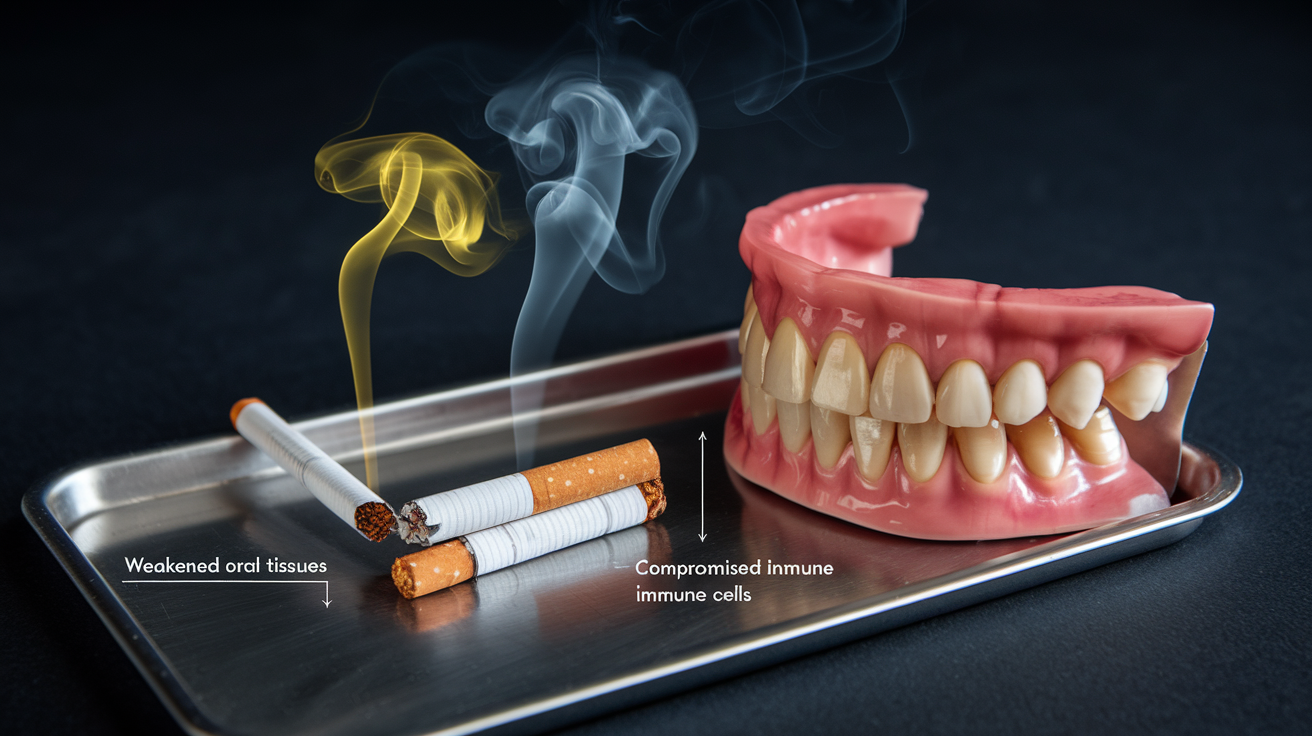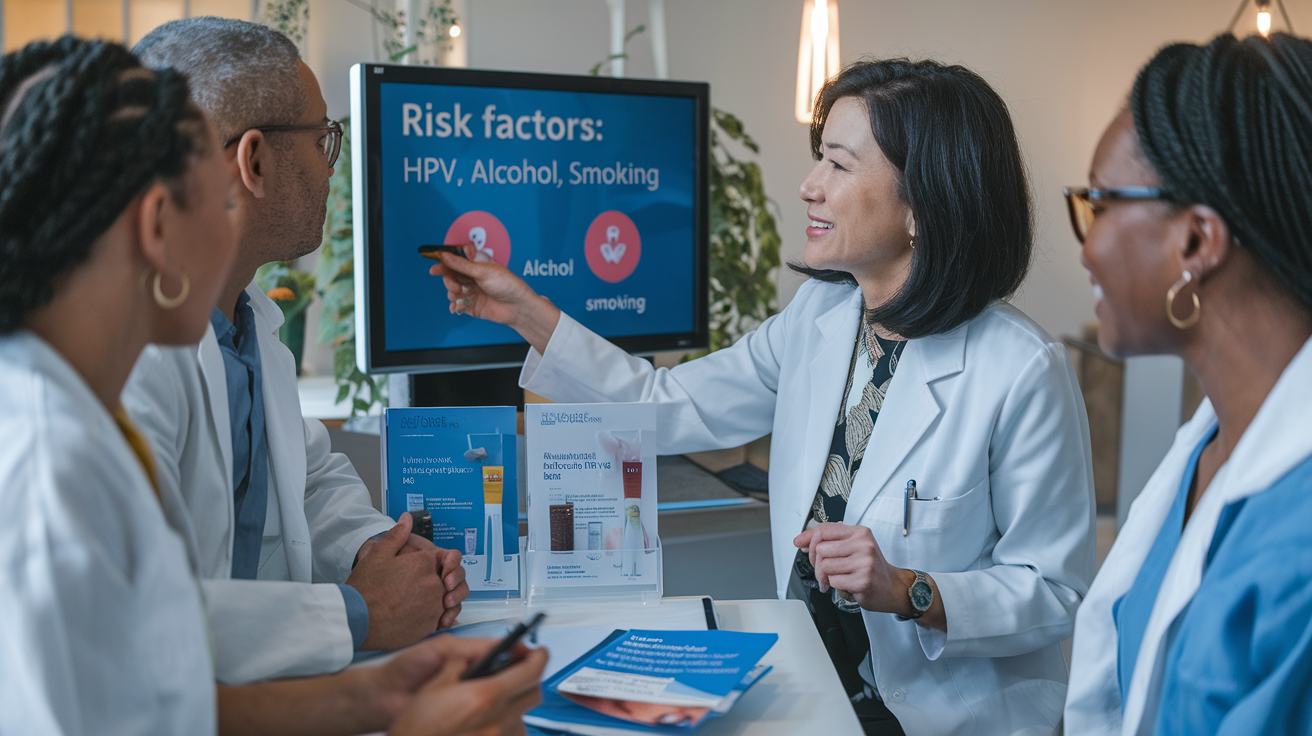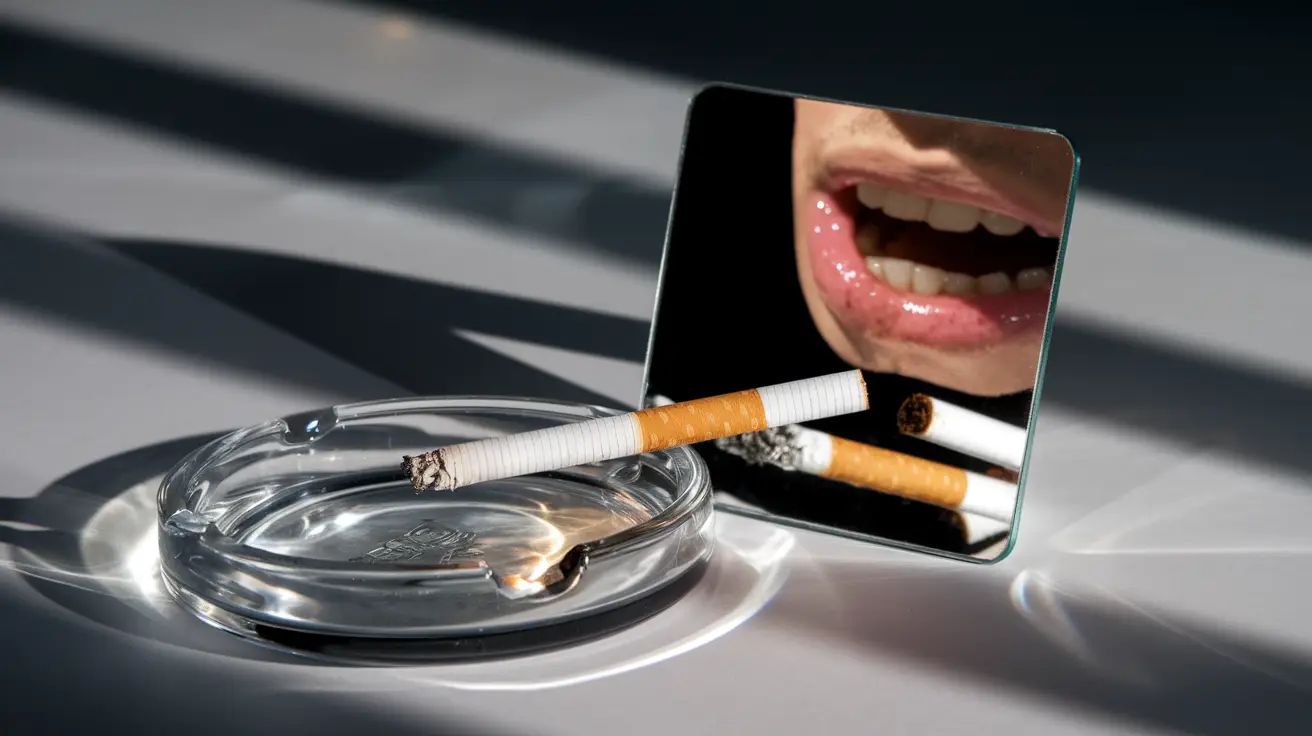Oral cancer isn’t just about tobacco—discover hidden risk factors, symptoms, and prevention strategies to safeguard your health.
You think smoking is the only way to get oral cancer? Think again.
Most people are blindsided when they hear that even without a cigarette habit, they could be at risk. The threat of oral cancer extends far beyond tobacco—hiding in everyday habits and genetic factors you’ve probably never considered.
Understanding these hidden oral cancer risk factors could literally save your life. From that nightly glass of wine to HPV exposure and even certain genetic markers, your risk profile is more complex than you realize.
But here’s what keeps oncologists up at night: most people won’t discover these threats until it’s too late. What if the most dangerous risk factor in your life is something you’re doing every day without a second thought?
Smoking’s Toxic Trio: How Cigarettes Cripple Your Smile’s Defenses?

Is Smoking Sneakily Killing Your Smile?
You already know smoking is bad news. The warnings are plastered everywhere – from cigarette packs to billboards. But what those warnings don’t tell you is exactly how smoking wages war on your mouth specifically.
Smoking doesn’t just stain your teeth (though it definitely does that). It’s like inviting a silent saboteur into your mouth every time you light up.
Here’s what’s really happening when you smoke:
First, cigarettes turn your mouth into the perfect playground for bacteria. The heat and chemicals immediately start changing your saliva – making it thicker and less effective at washing away harmful stuff. Your mouth essentially becomes a bacterial breeding ground.
Then there’s the oxygen problem. Smoking chokes off the blood supply to your gums. Less blood means less oxygen and fewer nutrients reaching the tissues that support your teeth. Your gums literally begin suffocating.
But that’s not even the scary part.
The real danger lies in how smoking messes with your body’s ability to detect and fight oral problems. The chemicals in cigarettes actually numb your immune system’s alarm bells. Your body can’t properly recognize when something’s wrong, so issues that would normally trigger healing responses go unnoticed until serious damage occurs.
Think about it this way: if your mouth were a castle, smoking doesn’t just invite the enemy in – it blindfolds the guards, blocks the emergency exits, and cuts the alarm wires.
What’s worse? This damage happens silently. You won’t feel it day to day. Many smokers have “comfortable” mouths right up until teeth start loosening or a suspicious patch appears.
The numbers tell the grim story:
- Smokers are 6 times more likely to develop oral cancer
- 75% of all oral cancers are linked to tobacco use
- Smokers lose more teeth and develop gum disease earlier than non-smokers
- Healing after dental work takes significantly longer if you smoke
The most disturbing part? Your body often can’t show you the warning signs until it’s too late. That “comfortable” feeling in your mouth might just be your deadened nerves failing to signal problems that are brewing beneath the surface.
Quitting isn’t just about avoiding cancer someday – it’s about stopping this daily assault on your mouth’s defenses right now. Within just 48 hours of quitting, your oral environment begins improving. Within weeks, your body starts repairing the damage.
Your smile is worth protecting. And the best protection starts with putting down that cigarette.

Awareness of oral cancer risk factors beyond tobacco is crucial for everyone’s health. While smoking remains a primary concern, understanding that HPV infection, excessive alcohol consumption, chronic sun exposure, genetic predisposition, and poor oral hygiene all contribute to risk can empower better prevention strategies.
Protect yourself by maintaining regular dental check-ups, limiting alcohol intake, practicing safe sun habits, and being vigilant about unusual oral changes. Early detection dramatically improves outcomes, so prioritize your oral health checks as part of your overall wellness routine. Your smile deserves comprehensive protection against all risk factors, not just the well-known ones.
Understanding Oral Cancer: More Than Just Tobacco
Early detection can lead to more successful treatment outcomes, making regular dental check-ups essential. Being aware of all risk factors can help individuals make informed decisions about their health. Proper oral hygiene and sun protection are key components of prevention strategies.
Taking proactive steps can contribute to long-term oral health and overall well-being. Stay informed and prioritize comprehensive protection for your oral health. Regular dental check-ups are essential for early detection and successful treatment outcomes.
Awareness of all risk factors informs individuals’ health decisions. Proper oral hygiene and sun protection are crucial for preventing oral cancer. Proactive steps contribute to long-term oral health and overall well-being. Stay informed and prioritize comprehensive protection for your oral health.
Recent research highlights several emerging risk factors for oral cancer beyond tobacco use. Here are some key findings:
- HPV Infection: Certain strains, particularly HPV-16, are increasingly linked to oral cancers, especially those affecting the base of the tongue and tonsils.
- Excessive Alcohol Consumption: Alcohol enhances the absorption of carcinogens, increasing the risk of genetic mutations that contribute to cancer.
- Chronic Oral Irritation: Poorly fitting dentures, sharp teeth, and persistent trauma may play a minor role in increasing cancer risk.
- Dietary Deficiencies: A diet low in fruits and vegetables can weaken the body’s defenses against cancer.
- Betel Nut and Areca Nut Chewing: Common in some regions, these substances are known carcinogens that significantly raise oral cancer risk.
- Sun Exposure: Chronic exposure to UV radiation is linked to lip cancer.
- Genetic Predisposition: While most cases are linked to lifestyle factors, genetic susceptibility can elevate risk.
- Poor Oral Hygiene: Chronic inflammation from inadequate oral care can contribute to abnormal cell changes.
Additionally, advancements in early detection methods are improving survival rates. Researchers are exploring salivary biomarkers and AI-driven diagnostic tools to identify cancerous lesions earlier
Preventing oral cancer involves a combination of lifestyle choices, regular screenings, and awareness of risk factors. Here are some effective strategies:
- Avoid Tobacco & Alcohol: Smoking and excessive alcohol consumption significantly increase the risk. Quitting both can drastically lower your chances of developing oral cancer2.
- Maintain Good Oral Hygiene: Regular brushing, flossing, and dental check-ups help prevent infections and detect abnormalities early.
- Get Vaccinated Against HPV: HPV-16 is linked to oral cancers, and vaccination can reduce the risk.
- Limit Sun Exposure: Protect your lips from UV radiation by using lip balm with SPF and wearing a hat when outdoors.
- Follow a Healthy Diet: A diet rich in fruits, vegetables, and antioxidants strengthens your immune system and lowers cancer risk.
- Regular Dental Check-ups: Dentists can identify early signs of oral cancer, improving chances of successful treatment.
- Avoid Betel Nut & Areca Nut: These substances are known carcinogens and significantly increase oral cancer risk.
- Stay Hydrated: Drinking plenty of water helps maintain oral health and reduces the impact of harmful substances.
Early detection is key—routine screenings and awareness of symptoms can make a life-saving difference.
Oral cancer prevention strategies share similarities with those for other cancers, but they also have unique aspects. Here’s how they compare:
Similarities with Other Cancer Prevention Strategies
- Avoiding Tobacco & Alcohol: Just like lung, throat, and liver cancers, oral cancer risk is significantly reduced by quitting smoking and limiting alcohol intake.
- HPV Vaccination: HPV is linked to cervical, anal, and some head and neck cancers, making vaccination a key preventive measure across multiple cancer types.
- Healthy Diet & Lifestyle: A diet rich in fruits, vegetables, and antioxidants helps prevent various cancers, including colorectal and breast cancer.
- Regular Screenings: Early detection improves survival rates for oral cancer, similar to breast, cervical, and colorectal cancers.
Unique Aspects of Oral Cancer Prevention
- Oral Hygiene & Dental Check-ups: Unlike most cancers, maintaining good oral hygiene and visiting the dentist regularly can help detect precancerous lesions early.
- Sun Protection for Lips: Lip cancer prevention involves UV protection, which is more relevant to skin cancers like melanoma.
- Avoiding Betel Nut & Areca Nut: This is a specific risk factor for oral cancer, particularly in certain regions.
Cancer prevention efforts have shown promising results, with early detection and lifestyle changes significantly reducing incidence rates. Here are some key statistics:
- Global Cancer Prevention Impact: In 2022, about 20 million new cancer cases were reported worldwide, with 9.7 million deaths. Prevention strategies, including screenings and vaccinations, have helped reduce mortality rates.
- India-Specific Data: The estimated number of cancer cases in India was over 14 lakh in 2023. Tobacco-related diseases remain a major concern, with 2,500 deaths per day.
- Oral Cancer Prevention: Cancers of the oral cavity and lungs account for a significant portion of male cancer deaths in India. Early detection and awareness campaigns have improved survival rates.
- HPV Vaccination Success: HPV-related cancers, including cervical and oral cancers, have seen a decline in incidence due to vaccination programs.
- Screening & Early Detection: Regular screenings for breast, cervical, and colorectal cancers have led to higher survival rates, with early-stage detection improving treatment outcomes
Cancer prevention has evolved significantly over the years, shifting from basic lifestyle recommendations to advanced molecular and genetic interventions. Here are some key milestones:
Early Prevention Approaches
- 1727: Surgical removal of suspicious growths was suggested as a preventive measure.
- 1775: The first occupational cancer link was identified—chimney sweeps exposed to soot had higher rates of scrotal cancer.
- 1950s: Smoking cessation campaigns began after studies confirmed tobacco as a major carcinogen.
Advancements in Screening & Early Detection
- 1960s: Colonoscopy and polypectomy were introduced to prevent colorectal cancer.
- 1970s: Pap tests and colposcopy became standard for cervical cancer prevention.
- 2000s: AI-driven diagnostics and liquid biopsies improved early detection accuracy.
Modern Prevention Strategies
- HPV Vaccination: Introduced to prevent cervical and oral cancers linked to HPV.
- Precision Medicine: Genetic screening helps identify individuals at higher risk, allowing for personalized prevention plans.
- Chemoprevention: The use of synthetic vitamin A analogs (retinoids) to stabilize precancerous lesions.
- Lifestyle-Based Prevention: Emphasis on diet, exercise, and environmental factors to reduce cancer risk.
Cancer prevention now integrates genetic, environmental, and behavioral factors, making strategies more effective and personalized2. You can explore more details here and here. Let me know if you’d like insights on specific types of cancer prevention!
Share this content:

